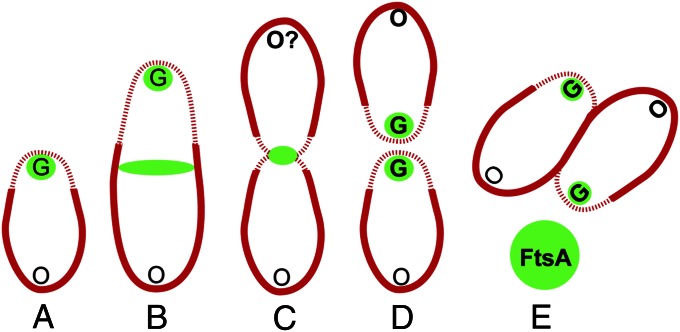Fig. 6.
FM 4-64 labeling and FtsA localization indicate pole identity and cell-cycle progression. An Agrobacterium cell begins with an old pole (O) and a growth pole (G). FM 4-64 fluorescence intensity is indicated by the thickness of the cell outline in red. FtsA localization is indicated in green. Original O and G poles, nonbold font. Poles created during the cell cycle or poles that acquire a new pole identity, bold font. FtsZ exhibits a similar dynamic localization pattern correlated with cell-cycle progression. After cell division is complete, FtsA-GFP (A) is maintained in a unipolar focus at the growth poles of both daughter cells. After a period of growth, FtsA-GFP accumulates in a band at the midcell (B). When the cell begins to constrict, FtsA-GFP is localized exclusively at the midcell and FM 4-64 staining is bipolar (C). Cytokinesis produces two siblings with FtsA localization at two new growth poles (D and E).

